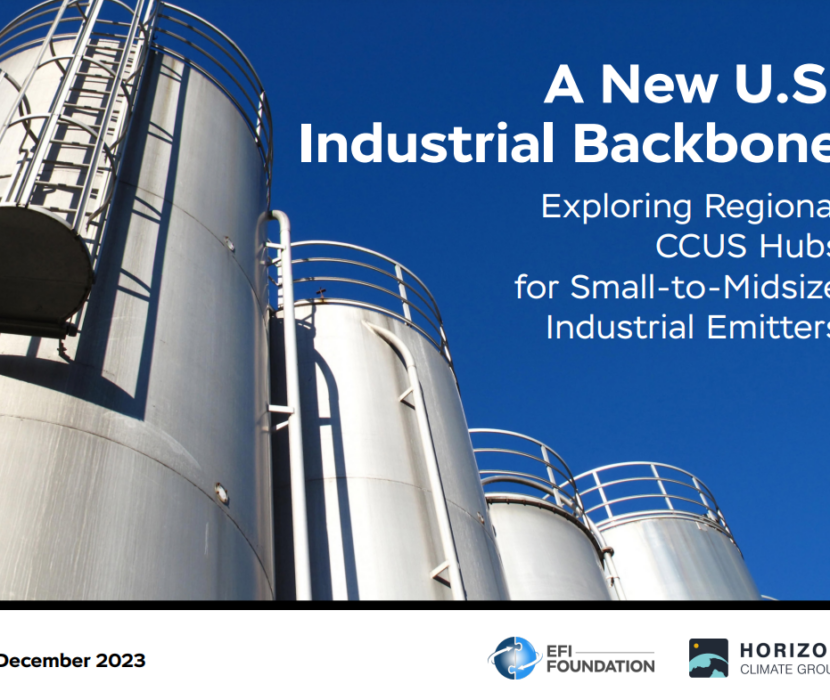
On a visit to Europe, EFI Foundation Senior Vice President of Outreach and Policy Strategy David Ellis saw firsthand how Denmark is successfully making the journey to a national goal of 100% net-zero carbon emissions by 2045.
This year, 67% of Denmark’s electricity was generated by renewables, and the government has stated that by 2024, more than 70% will come from low- or zero-carbon sources.
Although the northern European nation is a parliamentary democracy with multiple political parties and frequent coalition governments, there has been cross-party support for a generation for the idea that the challenge of climate change requires a coordinated, long-term shift away from fossil fuels—despite Denmark’s reserves of natural gas. The Danish all-of-the-above approach includes a program for injecting carbon dioxide from other nations into reservoirs under the North Sea.
“While there are small policy changes from one government to the next, you don’t get the arguments or reversals about the path forward that happen elsewhere,” noted Kristian Jensen, a former Danish Foreign Minister who is Chief Executive Office of Green Power Denmark.
Green Power Denmark is itself a tangible sign of the Danish consensus. The business association was created in 2022 by a merger of the mainstream Danish energy association with smaller groups representing solar and wind companies. Today, its 1,500 members represent all aspects of the zero-carbon supply chain—including renewable companies, green energy and electricity storage developers, and electricity distribution firms.
The group is newly ensconced in a converted factory building overlooking Copenhagen harbor, with views of the piers and urban beaches where, on a recent sunny September afternoon, hundreds of locals were sunbathing and swimming in a waterway that was a polluted no-go area a generation ago. “This harbor is a tangible sign of progress that’s possible in a pretty short period of time,” said Jensen.

Denmark’s commitment to a full press on the clean energy transition is led by two government departments dedicated to environmental issues. Lars Aagaard Moller heads the domestic ministry of Climate, Energy and Utilities, which is leading the buildout of three offshore wind facilities and auctions to store up to 2.3 million metric tons of carbon dioxide emissions each year. Dan Jorgensen is the minister of Development Cooperation and Global Climate Policy, with a brief to tie foreign aid to emissions reductions and coordinate cross-border efforts to promote energy innovation.
Christian Stenberg, the lead policy advisor for both ministers, says the move in 2002 to split responsibilities was in part to have shared Danish expertise globally. In China, for example, the world’s largest emitter of greenhouse gases, Danish experts crafted a power plant flexibility program that encourages coal-fired power plants to reduce their polluting output when wind energy is abundant. In 2016, about 17% of wind energy was wasted due to system inflexibility; two years later, the wind energy waste was down to 7% of peak production.
Denmark is also driving a global push to deploy private capital to boost renewable energy to the United States and beyond.
Copenhagen Infrastructure Partners (CIP) is a decade-old investment firm dedicated to jumpstarting the energy transition globally. So far, the fund manager has deployed some 25 billion euros from investors for use in green energy infrastructure.
Lars Gert Lose, a former Danish ambassador to the United States, joined CIP two years ago as head of Global Public Affairs to amplify the firm’s moves to create low-carbon power sectors and drive innovation to help heavy industry shift to clean sources of fuel for aviation, transportation, and agriculture. CIP has a goal of raising a total of 100 billion euros by 2030.

CIP is a first mover in the U.S. offshore wind buildout, through its 50% stake in the Vineyard Wind 1 project sited 15 miles off the coast of Massachusetts. The $3 billion, 800-megawatt-capacity wind facility has 20-year power purchase agreements with three local utilities and can meet the power needs of 400,000 homes. (In comparison, the United States currently has seven offshore wind turbines generating just 42 megawatts.)
In Denmark, there is broad recognition that incentives included in the Inflation Reduction Act will turbocharge investment in the U.S. energy sector. CIP has already identified the Gulf Coast region as a target for further investment in 2024. As Lose noted, passage of the IRA was significant in that it put the United States on a sustained pathway to clean energy. Denmark is a leading example of how a coordinated approach to energy policy can provide permanent, positive change.
David Ellis, Senior Vice President of Outreach and Policy Strategy
(Share this post with others.)




